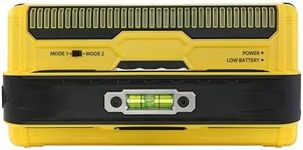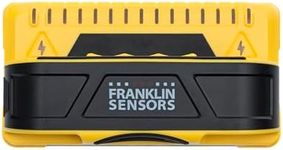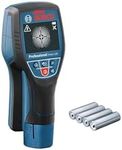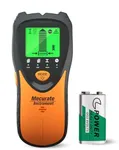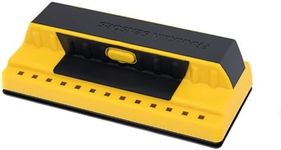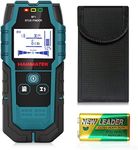Buying Guide for the Best Stud Sensors
Choosing the right stud sensor can make your home improvement projects much easier and safer. Stud sensors help you locate the wooden or metal studs behind your walls, which is essential for securely mounting shelves, TVs, or heavy objects. When picking a stud sensor, it's important to understand the key features and how they relate to your needs, so you can find a model that is accurate, easy to use, and suitable for the types of walls in your home.Detection DepthDetection depth refers to how deep into the wall the stud sensor can detect objects like studs, pipes, or wires. This is important because walls can vary in thickness, and you want a sensor that can accurately find studs even if they are set deeper behind drywall or plaster. Basic models usually detect up to 0.5 inches, which is enough for standard drywall, while more advanced sensors can reach 1.5 inches or more, which is useful for thicker walls or if you want to detect objects behind tile or paneling. If you mostly work with standard interior walls, a basic depth is fine, but for older homes or special projects, a deeper detection range is better.
Detection ModesDetection modes are the different settings a stud sensor offers, such as stud, metal, or live wire detection. This is important because walls can hide more than just wooden studs—there may be metal pipes or electrical wires you want to avoid. Some sensors only find wood studs, while others can switch modes to find metal or alert you to live wires. If you only need to hang pictures, a basic wood stud mode is enough, but for more complex projects or safety, look for a sensor with multiple detection modes.
Display TypeDisplay type refers to how the stud sensor shows you the results, such as with simple lights, beeps, or a digital screen. This matters because a clear display makes it easier to understand exactly where the stud is and reduces mistakes. Basic models use LED lights or sound, which can be less precise, while advanced models have digital screens that show the exact location and type of object detected. If you want quick, simple feedback, a basic display is fine, but for more accuracy and confidence, a digital display is helpful.
CalibrationCalibration is the process the sensor uses to adjust itself to the wall before scanning. Some sensors require manual calibration, where you press a button and wait, while others calibrate automatically. This is important because proper calibration ensures accurate readings and avoids false positives. If you want a hassle-free experience, look for a sensor with automatic calibration, but if you don’t mind an extra step and want to save on cost, manual calibration is acceptable.
Size and ErgonomicsSize and ergonomics refer to how comfortable and easy the stud sensor is to hold and use. This matters because you may need to scan large areas or work overhead, so a lightweight, well-shaped sensor is easier to handle. Some sensors are compact and fit in your pocket, while others are larger with grips for better control. If you have small hands or need to use the sensor in tight spaces, a smaller model is better, but for frequent or extended use, a larger, ergonomic design can reduce hand fatigue.
Battery Type and LifeBattery type and life describe what kind of batteries the sensor uses and how long they last. This is important because you don’t want the sensor to die in the middle of a project. Some use standard AA or 9V batteries, while others have rechargeable options. If you use the sensor occasionally, battery type may not matter much, but for frequent use, look for a model with long battery life or easy-to-replace batteries.


